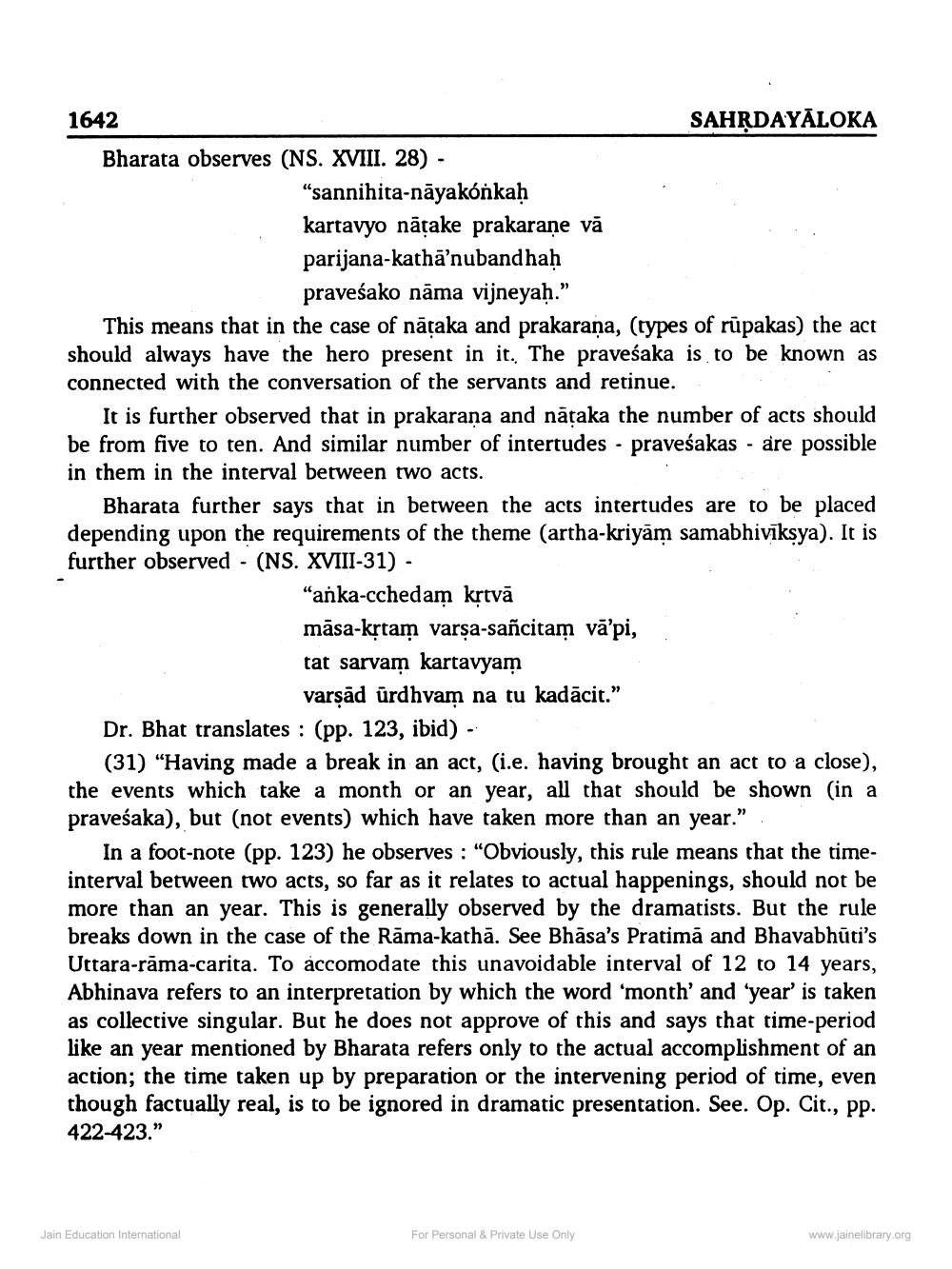________________
1642
SAHRDAYĀLOKA
Bharata observes (NS. XVIII. 28) -
“sannihita-nāyakónkaḥ kartavyo nātake prakarane vā parijana-kathā'nubandhaḥ
praveśako nāma vijneyaḥ." This means that in the case of nātaka and prakarana, (types of rūpakas) the act should always have the hero present in it. The praveśaka is to be known as connected with the conversation of the servants and retinue.
It is further observed that in prakarana and nataka the number of acts should be from five to ten. And similar number of intertudes - praveśakas - are possible in them in the interval between two acts.
Bharata further says that in between the acts intertudes are to be placed depending upon the requirements of the theme (artha-kriyām samabhivīksya). It is further observed - (NS. XVIII-31) -
"anka-cchedam krtvā māsa-kstam varşa-sancitam vā'pi, tat sarvam kartavyam
varsad urdhvam na tu kadācit." Dr. Bhat translates : (pp. 123, ibid) -
(31) "Having made a break in an act, (i.e. having brought an act to a close), the events which take a month or an year, all that should be shown in a praveśaka), but (not events) which have taken more than an year.”
In a foot-note (pp. 123) he observes : "Obviously, this rule means that the timeinterval between two acts, so far as it relates to actual happenings, should not be more than an year. This is generally observed by the dramatists. But the rule breaks down in the case of the Rāma-kathā. See Bhāsa's Pratimā and Bhavabhūti's Uttara-rāma-carita. To accomodate this unavoidable interval of 12 to 14 years, Abhinava refers to an interpretation by which the word 'month' and 'year' is taken as collective singular. But he does not approve of this and says that time-period like an year mentioned by Bharata refers only to the actual accomplishment of an action; the time taken up by preparation or the intervening period of time, even though factually real, is to be ignored in dramatic presentation. See. Op. cit., pp. 422-423."
Jain Education International
For Personal & Private Use Only
www.jainelibrary.org




